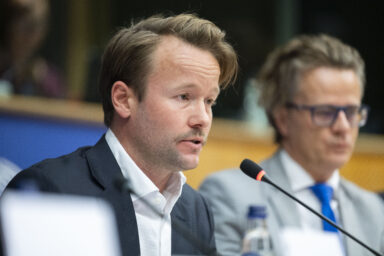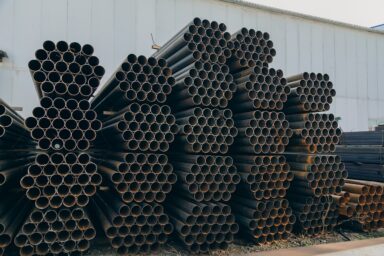MEPs from the environment and internal market committees adopted on Monday their proposed report on new EU regulation covering the entire vehicle lifecycle, from design to final end-of-life treatment.
On EU lawmakers took a decisive step toward forcing carmakers to embrace circularity on 7 June. Committees in the European Parliament approved sweeping rules to govern vehicles from factory to scrapheap, aiming to cut waste and boost recycling.
The proposal won the backing of 79 MEPs (with 27 against and 11 abstentions) and now heads to a September plenary vote. It aligns with the bloc’s Green Deal ambitions, targeting the 6.5m vehicles that reach end-of-life annually in Europe—many of which leak hazardous materials or lose recyclable parts to landfills.
No to planned obsolescence
Cars and vans face the rules one year after adoption; buses, lorries and motorcycles get five years to adapt. Exemptions cover military, emergency and heritage vehicles. Manufacturers must design new models for easy disassembly, letting authorised facilities salvage parts for reuse. The text explicitly bans software updates that block repairs—a nod to consumer gripes over “planned obsolescence”.
Recycled plastics will form at least 20 per cent of new vehicles within six years, rising to 25 per cent by 2035 if market conditions allow. The European Commission will study similar targets for steel and aluminium. Carmakers must also fund the collection and treatment of end-of-life vehicles (ELVs), including safe removal of refrigerants and fluids. National authorities will face pressure to inspect ELV facilities more rigorously, cracking down on illegal scrap exports.
You might be interested
Used cars may only be shipped abroad if roadworthy, with stricter customs checks to stop ELVs masquerading as functional vehicles. Co-rapporteurs for the report Jens Gieseke (EPP/DE for ENVI) and Paulius Saudargas (EPP/ LT for IMCO) said: “Today’s committee vote is a success: the Parliament compromise, supported by a broad majority, promotes a circular economy in the automotive sector. It advances resource security, protects the environment, and ensures sustainability.” Their joint statement included a nod to the needs of the industry: “To avoid overburdening the industry, we secured feasibility with realistic targets, less red tape, and fair competition. A solid basis for the plenary vote in September.“
Cautious welcome
The European Automobile Manufacturers’ Association (ACEA) offered the entire initiative cautious praise in the past. In a 2023 position paper, it welcomed harmonised rules to replace the “current Directive”, arguing they would “reduce operating costs” and prevent raw materials “leaving the European market”. But it warned against “unnecessary, costly and burdensome flexibility” for member states. ACEA also backed an EU-wide ELV registry, noting manufacturers’ aim to cut “the total CO₂ footprint of vehicles over their entire life cycle”.
The stakes are high. Europe’s automotive sector guzzles 14 per cent of the bloc’s primary steel, aluminium and plastics, yet recycles just 30 per cent of ELV plastics. While metal recycling rates exceed 90 per cent, the output often lacks the purity needed for new cars. The rules aim to close these loops, but sceptics question timelines—particularly the five-year grace period for heavy vehicles.
Today’s committee vote is a success: the Parliament compromise, (enjoying the support of) a broad majority, promotes a circular economy in the automotive sector. MEPs Jens Gieseke, Paulius Saudargas
If passed, the regulation will replace a 2000 directive, tightening design standards and producer obligations. For an industry that built 14.8m vehicles in 2023, it signals a shift toward sustainable pragmatism. With 285.6m vehicles on EU roads, the legislation’s success hinges on balancing green ideals with the realities of global competition.
What the industry wants
However, ACEA also strongly recommended the technology neutrality approach towards new recycling technologies. Ambitious recycled content targets can be realistic only if they meet the following preconditions, the association said in 2023:
• any target should use as basis the plastics definition from the European Commission’s Joint Research Centre (thermoplastics + polyurethane foams);
• both mechanical and chemical recycling is OK;
• special thresholds for legacy Substances of Concern (SoC) are in place;
• pre-consumer and post-consumer recycled content must count towards the calculation;
• responsible bio-based feedstocks should are part of the calculation.










